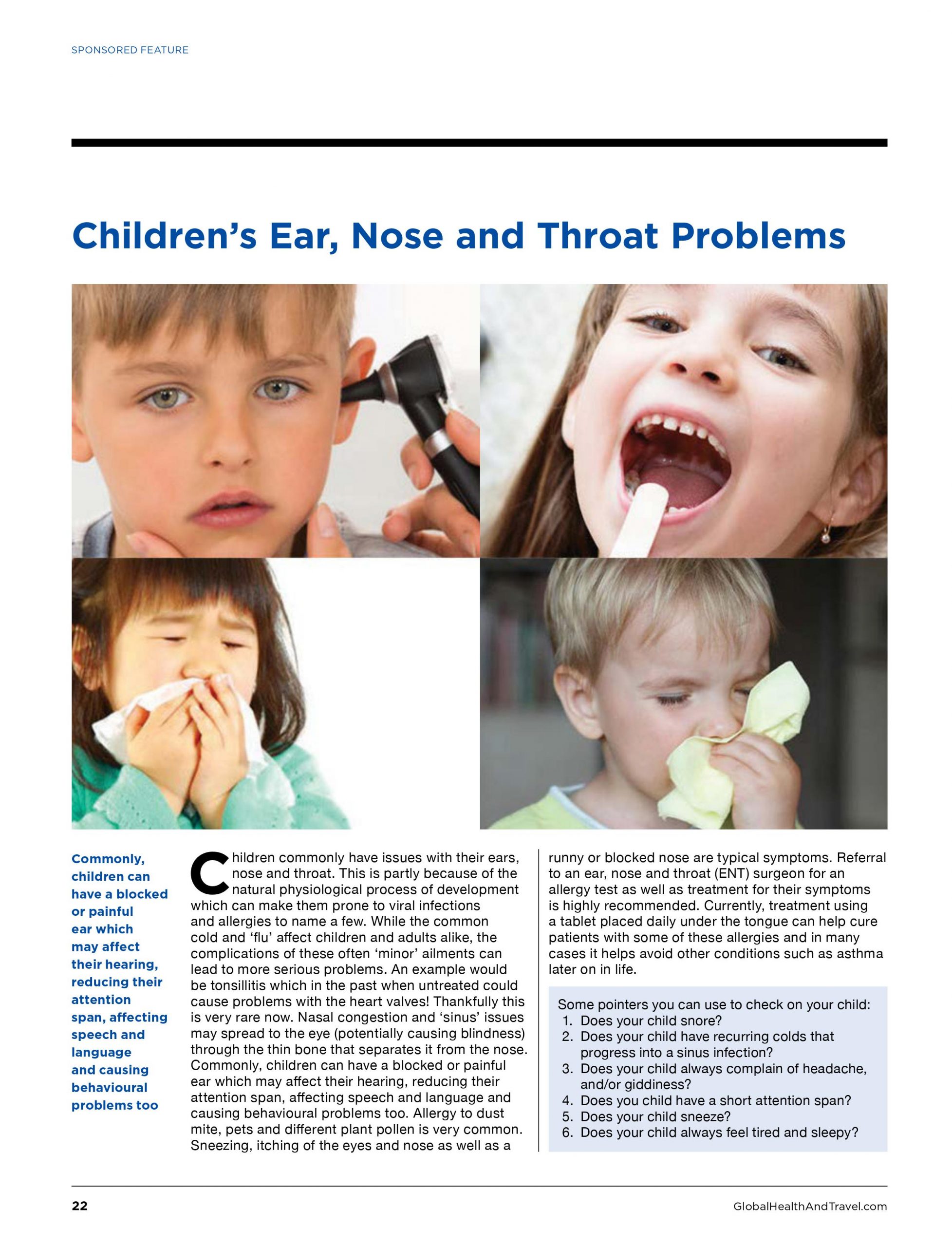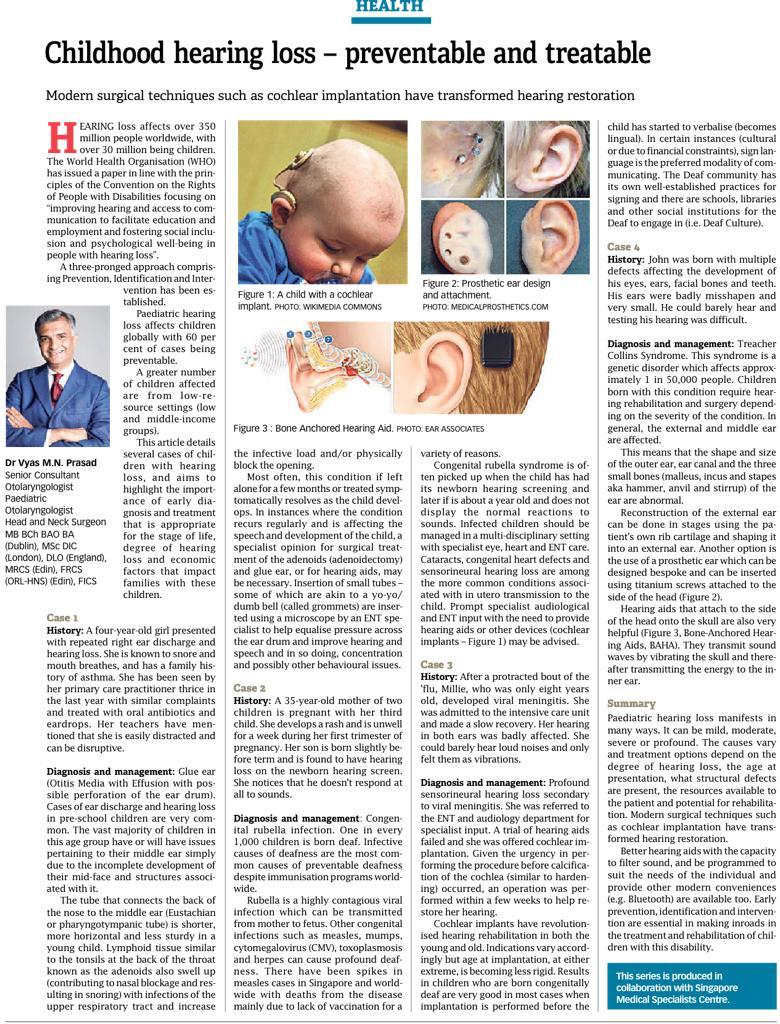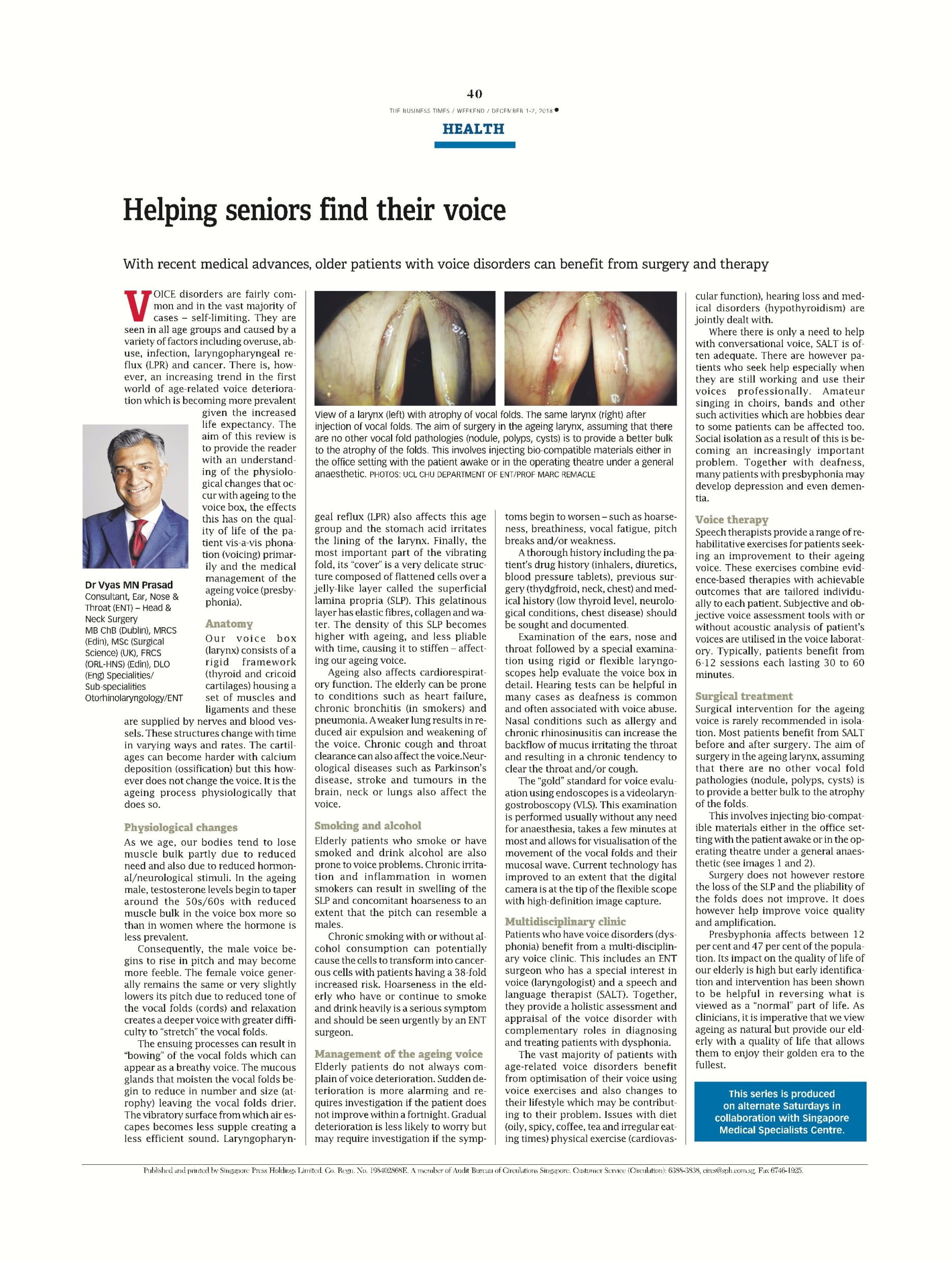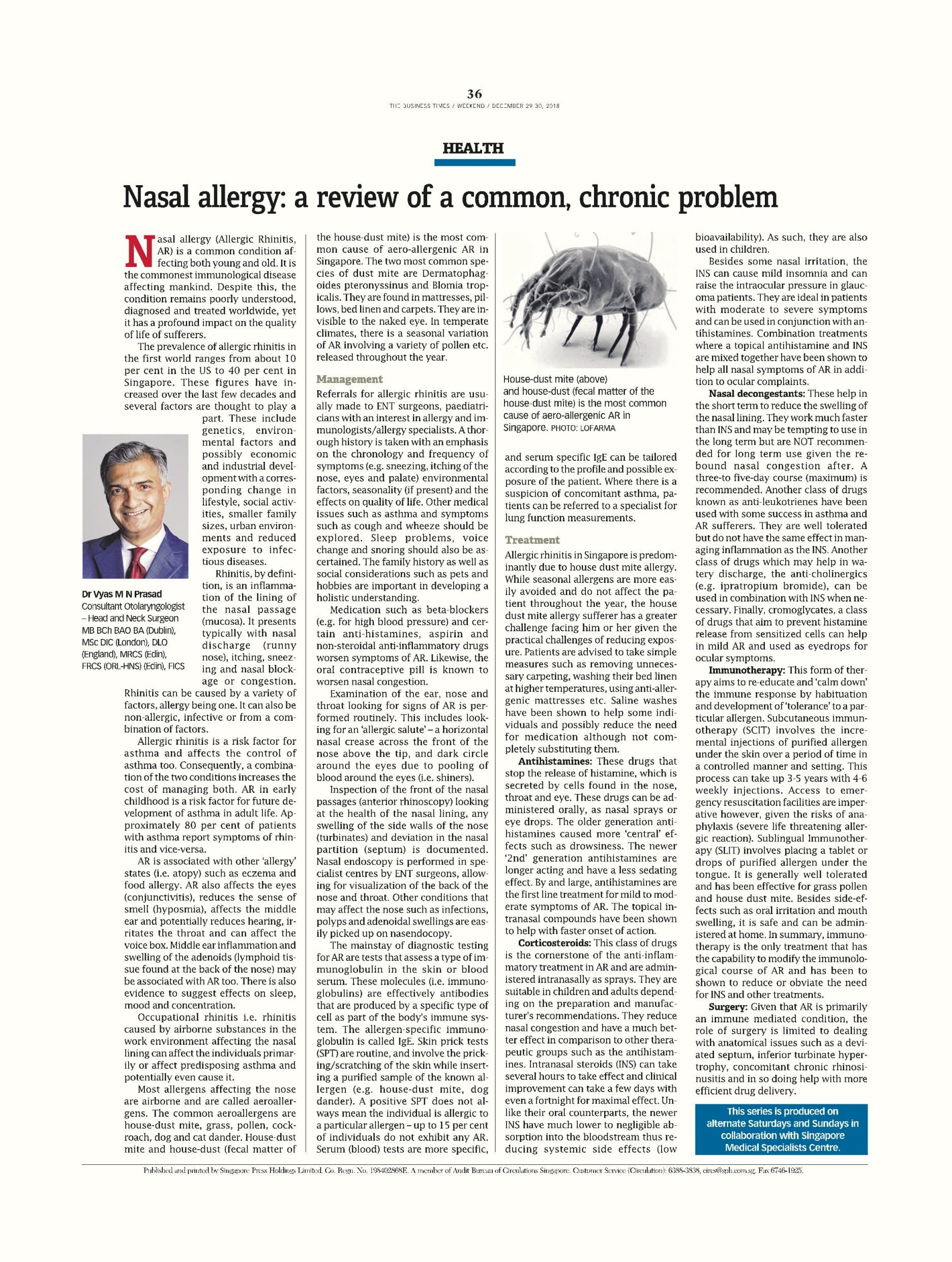Nasal allergy: a review of a common, chronic problem affecting the upper airway.
Introduction
Nasal allergy (Allergic Rhinitis, AR) is a common condition affecting both the young and the old. It is the commonest immunological disease affecting mankind. Despite this, the condition remains poorly understood, diagnosed and treated worldwide. AR has a profound impact on the quality of life (QOL) of sufferers – it affects schooling in children, reduction in attendances, reduced concentration and similarly so, has a profound effect on the working adult population with a considerable financial impact. The prevalence of allergic rhinitis in the first world ranges from approximately 10% in the USA to 40% in Singapore. These figures have increased over the last few decades and several factors are thought to play a part in this rise. These include genetics, environmental factors and possibly economic and industrial development with a corresponding change in lifestyle, social activities, smaller family sizes, urban environments and reduced exposure to infectious diseases.
Rhinitis, by definition, is an inflammation of the lining of the nasal passage (mucosa) and presents typically with nasal discharge (runny nose), itching, sneezing and nasal blockage or congestion. Rhinitis can be caused by a variety of factors, allergy being one. It can also be non-allergic, infective and also from a combination of factors i.e. mixed.
Allergic Rhinitis, Asthma and Other Medical Conditions
Allergic rhinitis is a risk factor for asthma and affects the control of asthma too. Consequently, a combination of the two conditions increases the cost of managing both. AR in early childhood is a risk factor for future development of asthma in adult life. Approximately 80% of patients with asthma report symptoms of rhinitis and vice-versa. The World Health Organization (WHO) published guidelines on Allergic Rhinitis and its Impact on Asthma (ARIA) classification (Figure 1) based on the frequency and severity of symptoms. AR is associated with other ‘allergy’ states (i.e. atopy) such as eczema and food allergy. AR also affects the eyes (conjunctivitis), reduces the sense of smell (hyposmia), affects the middle ear and potentially reduces hearing, irritates the throat and can affect the voice box. Middle ear inflammation and swelling of the adenoids (lymphoid tissue found at the back of the nose) may be associated with AR too. There is also some evidence to suggest its effects on sleep, mood and concentration. Occupational rhinitis i.e. rhinitis caused by airborne substances in the work environment affecting the nasal lining can affect the individuals primarily or affect predisposing asthma and potentially even cause it.
Common allergens
Most allergens affecting the nose are airborne and are called aeroallergens. The common aeroallergens are house-dust mite, grass, pollen, cockroach, dog and cat dander-although this list is by no means exhaustive. House-dust mite and house-dust (fecal matter of the house-dust mite) is the most common cause of aero-allergenic AR in Singapore. The two most common species of dust mite are Dermatophagoides pteronyssinus and Blomia tropicalis (Figure 2). They are found in mattresses, pillows, bed linen and carpets. They are invisible to the naked eye. In temperate climates, there is a seasonal variation of AR involving a variety of pollen etc. that are released throughout the year.
Management
History and Examination
Referrals for allergic rhinitis are usually made to ENT surgeons, paediatricians with an interest in allergy and immunologists/ allergy specialists. A thorough history is taken with an emphasis on the chronology and frequency of symptoms (e.g. sneezing, itching of the nose, eyes and palate) environmental factors, seasonality (if present) and the effects on the QOL of the subject. Other medical issues such as asthma and symptoms such as cough and wheeze should be explored. Sleep problems, voice change and snoring should also be ascertained. The family history as well as social considerations such as pets, hobbies etc. are important in developing a holistic understanding of the patient’s issues.
Medication such as beta-blockers (e.g. for high blood pressure) and anti-histamines, aspirin and non-steroidal anti-inflammatory drugs worsen symptoms of AR. Likewise, the oral contraceptive pill is known to worsen nasal congestion.
Examination of the ear, nose and throat looking for signs of AR is performed routinely. This includes looking for an ‘allergic salute’ – a horizontal nasal crease across the front of the nose above the tip and dark circle around the eyes due to pooling of blood around the eyes (i.e. shiners). Inspection of the front of the nasal passages (anterior rhinoscopy) looking at the health of the nasal lining, any swelling of the side walls of the nose (turbinates) and deviation in the nasal partition (septum) is documented. Nasal endoscopy is performed in specialist centres by ENT surgeons. This examination allows for visualization of the back of the nose and throat. Other conditions that may affect the nose such as infections, polyps and adenoidal swellings are easily picked up on nasendocopy.
Investigations
The mainstay of diagnostic testing in subjects with AR are tests that assess a type of immunoglobulin in the skin or blood serum. These molecules (i.e. immunoglobulins) are effectively antibodies that are produced by a specific type of cell as part of the bodies immune system. The allergen-specific immunoglobulin is called IgE. Skin prick tests (SPT) are a routine part of the allergy work-up and involve the pricking /scratching of the skin while inserting a purified sample of the known allergen (e.g. house-dust mite, dog dander etc.). A positive SPT does not always mean that the individual is allergic to a particular allergen with up to 15% of individuals who do not exhibit any AR. Serum (blood) tests are more specific and are performed when SPT is not available or when the SPT result is unhelpful. Serum specific IgE can be tailored according to the profile and possible exposure of the patient. Finally, where there is a suspicion of concomitant asthma, patients can be referred to a specialist for lung function measurements.
Treatment
Allergic rhinitis in Singapore is predominantly due to house dust mite allergy. While seasonal allergens are more easily avoided and do not affect the patient throughout the year, the house dust mite allergy sufferer has a greater challenge facing him or her given the practical challenges of reducing exposure. Patients are advised to take simple measures such as removing unnecessary carpeting, washing their bed linen at higher temperatures, using anti-allergenic mattresses etc. Saline washes have been shown to help some individuals and possibly reduce the need for medication although not completely substituting them.
Medication
Antihistamines
Given the difficulties in allergen avoidance, many AR patients are prescribed a variety of medication. A stepwise therapeutic approach is recommended with combination therapies being prescribed as severity increases. Antihistamines are drugs that stop the release of histamine which is secreted by cells found in the nose, throat and eye. These drugs can be administered orally, as nasal sprays or eye drops. The older generation antihistamines caused more ‘central’ effects such as drowsiness. The newer ‘2nd’ generation antihistamines are longer acting and have a less sedating effect. By and large, antihistamines are the first line treatment for mild to moderate symptoms of AR. The topical intranasal compounds have been shown to help with faster onset of action.
Corticosteroids
This class of drugs is the cornerstone of the anti-inflammatory treatment in AR and are administered intranasally as sprays. They are suitable in children and adults depending on the preparation and manufacturer’s recommendations. They reduce nasal congestion and have a much better effect in comparison to other therapeutic groups such as the antihistamines. Intranasal steroids (INS) can take several hours to take effect and clinical improvement can take a few days with even a fortnight for maximal effect. Unlike their oral counterparts, the newer INS have much lower to negligible absorption into the bloodstream thus reducing systemic side effects (low bioavailability). As such, they are also used in children. Besides some nasal irritation, the INS can cause mild insomnia and can raise the intraocular pressure in glaucoma patients. They are ideal in patients with moderate to severe symptoms and can be used in conjunction with antihistamines. Combination treatments where a topical antihistamine and INS are mixed together have been shown to help all nasal symptoms of AR in addition to ocular complaints.
Other Medical Treatments
Nasal decongestants help in the short term to reduce the swelling of the nasal lining. They work much faster than INS and may be tempting to use in the long term given their immediate effect. They are however NOT recommended for long term use given the rebound nasal congestion after. A three-to five-day course (maximum) is recommended. Another class of drugs known as the anti-leukotrienes have been used with some success in asthma and AR sufferers. They are well tolerated but do not have the same effect in managing inflammation as the INS. Another class of drugs which may help in watery discharge, the anti-cholinergics (e.g. ipratropium bromide) can be used in combination with INS when necessary. Finally, cromoglycates, a class of drugs that aim to prevent histamine release from sensitized cells can help in mild AR and used as eyedrops for ocular symptoms.
Immunotherapy
This form of therapy aims to re-educate and ‘calm-down’ the immune response by habituation and development of ‘tolerance’ to a particular allergen. Subcutaneous immunotherapy (SCIT) involves the incremental injections of purified allergen under the skin over a period of time in a controlled manner and setting. This process can take up 3-5 years with 4-6 weekly injection. Access to emergency resuscitation facilities are imperative however given the risks of anaphylaxis (severe life threatening allergic reaction). Sublingual Immunotherapy (SLIT) as the name implies involves placing a tablet or drops of purified allergen under the tongue. It is generally well tolerated and has been effective for grass pollen and house dust mite. Besides side-effects such as oral irritation and mouth swelling, it is safe and can be administered by the patient at home. In summary, immunotherapy is the only treatment that has the capability to modify the immunological course of AR and has been to shown to improve the QOL by reducing or obviating the need for INS and other treatments.
Surgery
Given that AR is primarily an immune mediated condition, the role of surgery is limited to dealing with anatomical issues such as a deviated septum, inferior turbinate hypertrophy, concomitant chronic rhinosinusitis and in so doing help with more efficient drug delivery.
Conclusion
Allergic rhinitis is a common but chronic and complex condition. It is poorly understood and often under treated. The ramifications of AR include the development of asthma, worsening of daily performance and quality of life in both children and adults. Treatment options are available and a stepwise evidence-based approach to its management is essential in order to provide a sustained improvement or even cure to affected individuals.
Vyas M.N Prasad
Consultant, Ear, Nose & Throat (ENT) – Head & Neck Surgery
Singapore Medical Specialists Centre
Specialties / Sub-specialties
Otorhinolaryngology / ENT
Specialty Interests
Voice & Swallowing Disorders, Head & Neck Surgery



